Marks & Spencer Promises 100 New Sustainability Commitments
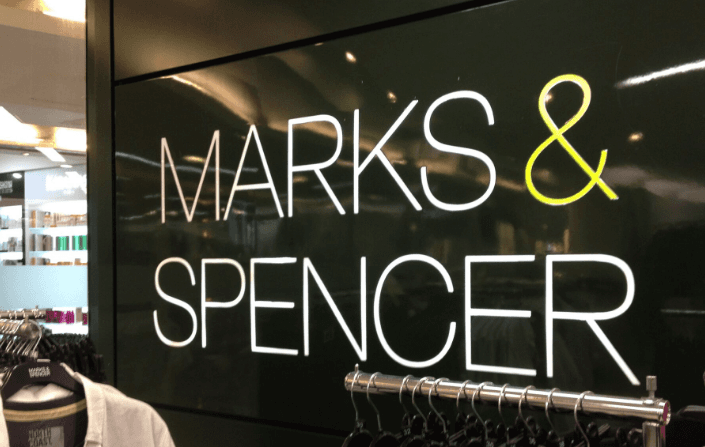

Marks & Spencer (M&S) has long been a first mover in the retail sector on supply chain sustainability, garment recycling and human rights. Now the venerable United Kingdom department store chain, which operates about 1,000 locations across Europe, Asia and the Middle East, says it is pushing even more boundaries. A decade after its first “Plan A” sustainability commitments, M&S is setting 100 new targets to be reached by 2025.
For M&S, the evolution of its sustainability plan is not just about social and environmental sustainability. As is the case with much of the world’s retail sector, this is also about remaining sustainable economically. If M&S cannot thrive financially, then neither can many of the workers within the farthest reaches its supply chain or the citizens who live in close proximity to its 950+ locations across the UK.
The company, as is the case with many of its competitors in retail, is struggling. Its clothing sales have been flat, as are revenues generated by its popular food halls. The recent spate of news is a disappointment after the previous quarter, when the company reported its first sales increase in two years. Keeping in line with much of retail, the fall fashion lines at M&S are reported to be largely cautious.
But M&S is refusing to throw caution in the wind when it comes to its sustainability agenda, as it knows the company needs to be relatable to fickle consumers in order to survive. To that end, one of the standout bullet points in M&S lengthy Plan A 2025 is 'community involvement.' M&S has promised that by the end of 2025, the company will “transform” 1,000 communities. The program will start with 10 neighborhoods around its stores, with which M&S will work to boost economic, social and environmental benefits. Based on how this pilot program evolves, the initiative will expand to more communities at which M&S has warehouses, offices and of course, stores. The program builds upon its “Healthy High Street” program, a partnership with community organizations, town councils and other retailers to find ways to strengthen local economies.
Community engagement sums up the first of the three pillars that largely define M&S’ 2025 targets. Well-being is another pillar, one that M&S says it hopes to improve the lives of 10 million people in the UK and abroad over the next eight years. Again, healthy and happy people who feel as if they have gained a positive impact from M&S one way or another are, by and large, going to shop at the retailer. In part, that means across stores in the UK and overseas, healthier choices in food and personal care products will hit the shelves. For workers who are attached to the retailer through their work in the supply chain, they should have healthier lives too – M&S said key to this objective is sourcing 50 critical raw materials that come from sources respecting ecosystems, animals, communities and people.
Finally, “caring for the planet” rounds out the third pillar of M&S’ recharged sustainability program. If that sounds too cliché, then M&S has put it another way: zero waste. M&S has already dabbled in circular economy initiatives with its Schwopping program, a partnership with Oxfam in which consumers are encouraged to drop off unwanted clothing items at the company’s retail locations. The company has been a zero waste operation across the UK and Ireland since 2012, but now that goal is being expanded across the entire company worldwide – a huge challenge for the company considering the consumer education and engagement needed in markets such as India and the United Arab Emirates.
If the devil is in the details, then this devil will be easy to find – M&S has outlined its goals in minute detail, and has a history of not only following up on its objectives, but being frank about the instances when it falls short of its goals. The challenge of M&S is typical for much of retail – how to remain relevant in consumers' lives as shoppers migrate away from brick and mortar onto computers screens and smartphones. Nevertheless, if M&S can accomplish everything from including more local artisan producers into its sourcing to replacing all HFCs in its refrigeration systems, the company can prove it is relevant to people’s lives – making the company strong and viable in the long run.
Image credit: Leon Kaye
Ford Foundation Opens Detroit Office for First Time in 64 Years


For over 80 years, the Ford Foundation has invested in people and ideas, including within the city where Henry Ford’s ideas transformed the automobile industry. When first established over 80 years ago, the foundation worked largely out of Detroit and Dearborn, and played a large part in contributing to the Motor City’s economic and cultural legacy.
The foundation moved to New York in 1953, but while it maintained close ties to its home, it was easy to question whether there was much of a connection between Ford Motor Co. and the philanthropy that launched as a result of the company’s rapid success. Furthermore, as one looks back, the foundation’s move east was a signal of Detroit’s slow decline. By many accounts, Detroit was the richest U.S. city in 1950, but its economic might had peaked.
The rest, as they say, is history, as Detroit became the poster child of the Rust Belt’s struggles and later, the continued loss of manufacturing jobs to offshoring and automation. While urbanization surges across the U.S., Detroit is still losing population. Through the struggles and crises, the foundation claimed it still maintained close ties to Detroit, and has supported programs to the tune of hundreds of millions of dollars – and filling much needed gap’s as the city’s civic leadership was often unwilling or unable to find a way to turn around the city’s cratering fortune.
Now, according to several news accounts, the foundation is returning to the city. Crain’s reported last week that a Detroit office will open in order to manage Detroit-based programs, including an affordable housing initiative, locally instead of remotely. In total, the foundation operates various Detroit-based initiatives with a total budget of approximately $15 million, the most of any U.S. city in which its programs operate.
Detroit still faces a long uphill climb in its quest to regain just a sliver of the economic momentum that showered it during much of the twentieth century. But the evidence suggests that the city has finally bottomed out – with its bankruptcy symbolizing the city’s hard fall and fitful recovery. The proximity of several top universities, a sturdy manufacturing base, its bountiful cultural options and relatively low cost of living makes the city an attractive prospect. JPMorgan Chase is one organization that has invested tens of millions of dollars in various social enterprise programs, a risk the bank says has been largely successful. Urban farms and tech startups are among the various new ventures that show promise as this city of 680,000 tries to punch its ticket to revitalization.
But for Detroit to rebound, the entire city needs a lift. Much of the effort has been centered on downtown and the Woodward Corridor. Yes, the Detroit Pistons will be back downtown, and even Michigan’s Albanian-Americans are contributing to good times in Motor City again. But there is more to Detroit than the stretch of town from the waterfront to I-94.
Many neighborhoods in Detroit have been left out of Detroit’s rebirth. Could having the brainpower of the Ford Foundation help? There is hope, as after all, the foundation itself is recalibrating how it operates. Earlier this year, its executives made the surprise announcement that $1 billion, or $1 in $12 of its endowment, was diverted into a fund that seeks to accelerate mission-related investing over the next decade. The foundation believes impact investing is the way forward; such a paradigm shift could benefit Detroit in the near future as well.
Image credit: Leon Kaye
When It Comes to Climate Change, Treat the Cause, Not the Symptoms


By Bruce Hull
Ignoring a disease can ruin your life. For most diseases, people have two choices: cure the causes or treat the symptoms. Take obesity as an example. Two causes are overeating and lack of excercise. People can cure obesity by dieting and exercise or they can treat the symptoms with insulin injections, blood pressure medicines, knee replacements, and other expensive and invasive procedures. The cure requires a bit of self-restraint, but provides other benefits like lower medical expenses, better job prospects, and increased energy levels. Treatment of symptoms costs a lot and often doesn’t work.
Like obesity, climate change also has multiple causes. The primary cause is emission of greenhouse gasses from the energy systems that power human civilization. The cure requires shifting energy consumption to solar, wind, tidal and other low carbon systems as well as consuming and using less. Or we can treat the symptoms of climate change by building sea walls, rebuilding infrastructure, relocating cites, inventing new types of crops that produce food in drought and heat, and managing new disease vectors and heat-related illnesses. The cure requires a bit of self-restraint, but provides other benefits like green jobs and healthy air. Treatment of symptoms costs a lot and often doesn’t work.
In the parlance of climate change, the cure is called mitigation and the treatment is called adaptation. The Paris Agreement is about mitigation. Most American’s want it, even most Trump supporters want it, but U.S. President Trump still seems willing to ignore its risks and costs.
The climate-obesity analogy goes further. We can blame our obesity on food companies and hope that scientists invent food that is sugar and fat free so that we can eat in excess without harming ourselves. Likewise, we can blame our greenhouse gas emissions on energy companies and hope that scientists will invent a cure. That is, we can risk hubris, continue business as usual, and hope technology invents a cure before the disease kills us.
The analogy goes further still. When a disease pushes you close to death, you may accept riskier treatment. You may volunteer for the experimental drug or organ transplant knowing the treatment might not work and could kill you sooner. Climate change treatment offers a similar high-risk option: geoengineering. We could shoot sulfur into the atmosphere to control sunshine or poor iron into oceans to absorb carbon. The treatments might not work and likely will harm other ecosystem services that sustain human civilization.
There is one more medical analogy of import. This one explains the divide between Republican and Democrat positions on climate change. Republicans worry that the treatment might be worse than the disease. Some treatments for climate change could grow government and increase regulation: cap and trade, for example, requires an enormous bureaucracy to set caps and monitor and redistribute monetary trades. Conservative Republican and former congressman Bob Inglis explains the conservative Republican revulsion to this treatment: it would be like going to the doctor complaining of a back pain and being told that the treatment requires removing and re-attaching your head. Suddenly your back pain becomes tolerable. Instead, he argues, if the treatment were revenue neutral and increased American economic competitiveness, like the border adjusted carbon tax he advocates, then climate change mitigation might be a pill Republicans could swallow.
We know how to cure climate change. The technologies and tools to help us succeed exist. We just need the will to swallow the pill.
Bruce Hull is a senior fellow at the Center for Leadership and Global Sustainability at Virginia Tech, based near Washington DC. He teaches, writes, and speaks about leadership practices for the cross-sector space where business, government, and civil society collaborate.
Now: Play Jenga With Ocean Plastic


Some 8 million metric tons of plastic end up in the ocean every year. Plastic bottles, bags and plastic nets drift through currents, ending up in the planet's subtropical gyres, spiraling currents that are essential to the movement of the ocean's waters. The world's "garbage patch" doesn't just clog waterways and currents, though. It poses a significant threat to marine mammals and fish, which ingest the plastic or get ensnarled in nets.
There have been a number of initiatives launched in recent years to clean up the gyres and the shorelines that are often depositories for the plastic. One of the more ingenious concepts is The Ocean Cleanup, that uses developing technology to scoop up the refuse. The developers are in the pilot stage and hope to launch it next year. They say it would take about 5 years to clean up 50 percent of the ocean's garbage patch.
The Plastic Bank, on the other hand, is tackling the human angle. It provides a living wage to individuals in developing countries who are willing to clean up the plastic on their beaches. The refuse is then funneled to companies that recycle it into products sold across the globe.
One of the companies that has been working to develop a supply chain is Pokonobe Associates, the maker of the Jenga game. The company has discovered that commercial plastic fishing nets provide ideal material for making Jenga's light-weight stackable blocks. But there's another motivator to its interest: It hopes that by creating a means to recycle fishing nets into toys, it can educate consumers about the importance of stopping ocean pollution.
At least 10 percent of the garbage that ends up in the world's oceans comes from discarded fishing nets either lost by commercial fishing vessels or discarded in the process.To highlight this fact and the importance of ocean cleanup, the game's designers, partners Paul Eveloff and Robert Grebler have spearheaded a new game called Jenga Ocean to call attention to the problem. They are also partnering with Bureo and the International Ocean Film Festival in promotion of the game, two long-time advocates for ocean clean-up efforts.
Bureo has had its own interesting success in the recycling arena in recent years. Its skateboards, glasses and other products are made with recycled nets, proving that sporting and game companies can not only provide a vehicle for reusing plastics, but give a good shout-out about the benefits of doing so. Bureo's efforts to build a company that could contribute in this way became the storyline for Net Positiva, a film recently screened at The International Ocean Film Festival.
https://youtu.be/1NzLrly030k
The new game's release will coincide with World Ocean Day, this week (June 8). Pokonobe, Bureo and the International Ocean Film Festival are hoping to inspire other companies to look for ways to recycle the ocean's vast collection of reusable plastic and be a megaphone for the importance of stopping marine pollution.
images Courtesy Pokonobe Associates; Fangz; Melina Miyoshi/Pokonobe Associates.
EC considers new rules for Internet companies
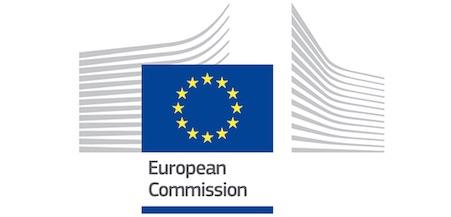
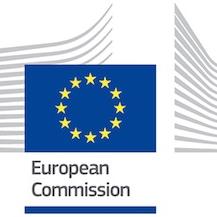
LSE's '1,000 Companies to Inspire Britain' recognizes fast growing green enterprises

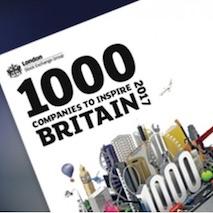
3p Weekend: Telling Nature To Go F*** Itself While Standing in a Garden Is a Pretty Gangsta Move


With a busy week behind you and the weekend within reach, there’s no shame in taking things a bit easy on Friday afternoon. With this in mind, every Friday TriplePundit will give you a fun, easy read on a topic you care about. So, take a break from those endless email threads, and spend five minutes catching up on the latest trends in sustainability and business.
It's been a rough week in sustainability land (and an exciting one in 3p land!). In any case, we are ready for the weekend and we thought you might be too.
While U.S. President Trump's decision to withdraw from the Paris accord is no doubt a huge blow to global cooperation, there is reason for optimism. Already collectives of businesses and city and state local governments are announcing plans to circumvent the U.S. federal government, and international actors are pushing back on President Trump's hopes to withdraw all together. We'll have more on the case for optimism on Monday.
In the meantime, some levity from Trevor Noah at the Daily Show:
https://youtu.be/monhjZzx4nw?t=59s
Global Shareholders to Big Oil: Address Climate Change Risk


It took 28 years, but last night ExxonMobil shareholders did the unexpected: They mustered a majority in calling for Exxon to disclose the impacts of climate change to its business.
The voice has been growing amongst ExxonMobil investors, many of whom are upset by the lack of disclosure that the company may have known years ago the impact of carbon emissions on the climate. Last year 38 percent of the shareholders voted in support for disclosure. This year, the tally was 62 percent, mirroring a growing concern that climate change may have a decisive impact on the company's bottom line.
And it's not just ExxonMobil that is feeling the pressure. In the past few months there have been calls for other oil and gas companies to "come clean" about climate risk, pushing for detailed analysis of the impacts that would affect shareholders' investments. Fifty-seven percent of shareholders at PPL, Pennsylvania's largest utility company, passed a resolution for the company to detail how current technologies and policies aimed at reducing global warming will affect the company's success.
Earlier last month, investors of the oil and gas development company Occidental Petroleum mustered a majority as well, calling for the board to provide disclosure of how the company will be affected by global warming (Occidental Petroleum did not disclose a final tally of the majority vote). While the board urged investors to vote against the resolution, it acknowledged its passage saying it would "look forward to continuing our shareholder engagement on the topic and providing additional disclosure about the company’s assessment and management of climate-related risks and opportunities."
The record vote at Occidental Petroleum was spearheaded by a group of investors, including the California Public Employees Retirement System and supported by asset manager, BlackRock, Inc, the global leader in asset management.
Chevron, which opened its shareholder meeting this Wednesday, also reviewed calls from shareholders to take steps to address the impact of climate change on its business. The board, which is urging investors to vote "no" on the proposals, argues that it has already taken steps to recognize the existence of climate change in a recent report. But shareholders are not convinced that step is enough.
It is also notable that the none of the proposals are binding. Yet Royal Dutch Shell, Chevron and to an extent, ExxonMobil have all taken steps to recognize the growing call from oil and gas industry shareholders.
Earlier this year, BlackRock called climate change a "systemic risk" and warned companies to begin addressing how climate change would affect its portfolios. It published several papers to help educate companies about the impact that climate change could have on their bottom lines, and how to limit their liability.
It also urged President Donald Trump not to cut back on proactive steps to limit climate change, a call that was apparently ignored when the administration announced that the U.S. would be pulling out of the Paris accord.
Trump's announcement is being seen by some analysts as a nod to oil and gas companies that oppose environmental regulations designed to reduce global warming.
But it is also being roundly criticized by world leaders who feel that the U.S. is missing a key opportunity to lead reform in how climate change is addressed in industry sectors.
In Canada, the Trudeau administration reassured voters that Prime Minister Trudeau was a supporter of addressing climate risk and didn't intend to follow the principles Trump has endorsed. While in Europe this week, Prime Minister Trudeau went on record to criticize those who weren't addressing climate change risks and feel they can "turn back the clocks" on the issue. His comment was seen as a veiled criticism of the Trump administration, but also as a message to the broader global audience that was holding back on decisive action.
With the growing pressure both on the world stage and by shareholders, it will be interesting to see how oil and gas companies really talk about the elephant in the room: what impact emissions have not only on the environment, but on companies' ability to remain sustainable.
Wikimedia image: (Specious)
Tactics of Diversion: Measuring and Reporting Zero Waste Targets
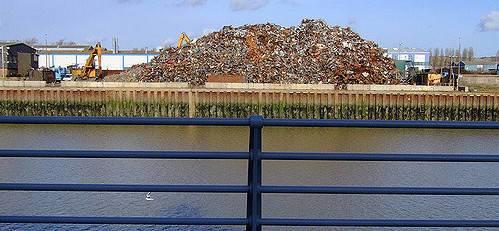

Waste implies squandered resources, be they time, money or materials. Managing money and time are core competencies of any successful business. But somehow, trash and garbage have gotten a free pass.
Fortunately, that is changing. As companies embrace one form or other of "zero waste" commitments, the business case for efficient and sustainable resource flow management is catching on.
Many are sincere in their efforts. However, setting, meeting, measuring and reporting such targets can be fraught with ambiguity due to a lack of agreed-upon terminology. Waste management must also integrate with other essential business processes, sustainability goals, and the reality of linear market economics.
The EPA provides a handy Policy and Program Planning Tool that allows users to "customize the list to a particular community’s needs, interests, and capabilities." With it, we begin to see the multitude of waste reduction targets, materials, and potential impacts.
It also reveals the Achilles heel of even the most well-intentioned zero waste initiatives: Whether it’s landfilled or burned, some argue waste never quite goes “away.” Most “zero waste” programs would be better described as “zero waste to landfill.” This fine point can be key to maintaining credibility, as doubters will jump on any overreach in a company’s claims.
Follow the Rs
Indeed, going “zero waste” without following best practices related to reducing, reusing and recycling could ultimately be more environmentally harmful than landfilling. The Reduce, Reuse, Recycle, Recover, inverted pyramid of “non-hazardous materials and waste management hierarchy,” is a good starting point for any company considering waste management strategies.
Once those steps are completed, then waste-to-energy is a good option. Covanta's high-tech Energy-from-Wastefacilities are a far cry from the backyard incinerators of my youth that released noxious emissions. Their process addresses many of the issues raised by opponents of energy-from-waste programs, including emissions, ash, and resource efficiency.
Be Transparent
We spoke to two organizations that offer third-party verification of standards compliance for waste management: NSF International Sustainability Services and the U.S. Zero Waste Business Council Zero Waste Program, administered by Green Business Certification Inc.
NSF focuses on "landfill-free" certification. Verification from GBCI is based on the Zero Waste International Alliance peer-reviewed definition of Zero Waste.
Each represents differing sets of standards, one for zero-waste-to-landfill, the other, zero-waste, but both organizations agree on the need for continually working toward common definitions, standards, and validation of waste management practices as a key to making zero waste a reliable, stringent goal.
"Zero Waste reporting in the past was like comparing oranges and pineapples; companies were all over the place," says Stephanie Barger, Director of Business Development for GBCI's Zero Waste Programs. "That’s why standardization and a commonly accepted definition are so important."
Along with GBCI and NSF, UL Laboratories and Green Circle also offer their own standards and validation for landfill diversion. But, like sustainability reporting in general, the evolution from "zero waste" as a throwaway phrase (pardon the pun) to a verifiable, measurable claim is underway. We're not there yet.
Companies can avoid criticism and doubt by simply verifying their claims. Adhering to any one set of third-party guidelines and verification will lend credibility and transparency to the overall push toward zero waste.
Start with an honest assessment
Like any other worthwhile goal, a clear sense of what is achievable begins with an honest assessment. "It is important for companies beginning their journey to zero waste to have realistic expectations," says NSF Senior Certification Project Manager Allison Skinner.
Engage Employees and get leaders involved
Simple use of recycling bins by employees can signal the start of the shift, but for reaching "higher levels of diversion, a culture change needs to happen and be driven from the top down,” Skinner explains.
“Our program emphasizes the importance of leadership engagement, employee training, and empowerment," Barger says, "that together can help drive strong Zero Waste policies with vendors and customers.”
In fact, for many companies, realizing any significant waste management goal, whether it be zero waste or landfill diversion, will require "significant changes to their business and operations in order to make progress toward their goals," says Skinner. "These changes can include rethinking supply chains, altering manufacturing processes, or finding new vendors for certain waste streams."
"Building the company culture and changing behavior, as mentioned above, takes time, persistence, and commitment."
Trust and verify
"Companies should track the method of diversion or disposal for each waste stream so they can understand how much material they are currently diverting from landfills," Skinner says. Both NSF and GBCI provide tools for getting started tracking both material flows and costs.
"Part of the certification requirements also includes setting up reporting that benchmarks base year performance and ongoing monthly tracking," says Barger. "Tracking data and measuring performance is really key to a successful Zero Waste strategy.
Rinse and repeat
So there is no universal standard, definitions and goals among the standards that are available vary, and it is hard work that requires change. Is going zero waste or zero-waste-to-landfill worth it?
Don’t find it, do it
In a sense, zero waste is like happiness. Granted, if Thomas Jefferson had written "life, liberty, and the pursuit of zero waste," it would likely have fallen flat. But Jefferson's implication is that happiness is a journey, a process, and a way of thinking. It's not something you find as much as something you do.
In the absence of the universal zero waste standard we all agree is needed, transparency is key to a successful program. Publicly state your target and the benchmark to which you will measure progress. Verify that progress against an available third-party standard and keep all stakeholders informed of achievements and challenges on your journey to zero waste.
Zero waste is one part of the whole. Waste management becomes resource management; new opportunities for better water management, reduced energy use, and efficiency improvements begin to fall into place. The changing company culture is reflected in society at large. Attitudes change, and slowly but surely, a fully functioning circular economy emerges.
Crisis Management: Lessons Learned From The Ivanka Trump Brand


Ivanka Trump's eponymous fashion brand has drifted far down from its original moorings in the luxury category, and the presidency of her father, Donald J. Trump, is not helping matters. Her brand is connected to his both through family ties and through her twin roles as a trusted advisor to the President and wife of Jared Kushner, a senior advisor and point man for White House policy. The result is a negative feedback loop that amplifies bad news and threatens to bring down the entire Ivanka brand.
Even a seasoned crisis management team would have difficulty steering the Ivanka Trump brand through rough seas, so it's instructive to take a look at the series of crises it has faced since President Trump assumed office.
Ivanka Trump and Make America Great Again
One persistent thread of the Ivanka brand story is the collision between its manufacturing model and President Trump's central message. Throughout his candidacy and into his presidency, Trump appealed to voters by promising to bring factory jobs back to the U.S. and "make America great again."
The campaign strategy included taking frequent pokes at China, and that rhetoric continued beyond Inauguration Day. Here's a representative snippet from an exclusive interview reported by Reuters in February:
"Well they, I think they're grand champions at manipulation of currency. So I haven't held back," Trump said. "We'll see what happens."During his presidential campaign Trump frequently accused China of keeping its currency artificially low against the dollar to make Chinese exports cheaper, "stealing" American manufacturing jobs.
That message put the media spotlight on the Ivanka brand, which relies heavily on factories in China to produce its wares. And, Ivanka Trump (the brand) has not failed to deliver the news to a hungry media pool.
In the latest development, earlier this week Time Magazine ran a bombshell story about the disappearance of three labor activists with the group China Labor Watch. According to the report, the group has been uncovering labor abuses for 20 years and only began encountering an extreme "level of scrutiny" when investigating a manufacturer of Ivanka Trump branded merchandise.
Ivanka was not the only brand involved. The investigators found orders for other brands at that same factory including popular ones like Nine West and Easy Spirit. Furthermore, the manufacturer (the Huajian Group) claims that Ivanka is a small fraction of its shoe business.
Nevertheless, the story focused almost exclusively on Ivanka. Time went with this headline:
The Men Investigating Ivanka Trump's Shoe Producer in China Are Missing or Arrested
With his emphasis on bringing factory jobs back to the U.S., President Trump has also brought negative attention to the Ivanka brand. Overseas manufacturing is commonplace and not newsworthy for other brands, but in light of the President's "MAGA" slogan it makes for juicy headlines.
In March, for example, Agence France-Presse reported that almost 60 tons of Ivanka items from overseas manufacturers were headed to U.S. ports from overseas even as Inauguration Day for the President-elect approached.
That headline was:
Ivanka Trump is exception to dad's 'Buy American' rule
The sensational disappearance or detention of three labor rights activists in China is also not the first time that the Ivanka brand has been linked to labor abuses in that country.
Last fall, investigators tracked overtime abuses at G-III, which licenses Ivanka fashion items among other brands. The Washington Post revived the story in April. Even though G-III manufactures other well-known U.S. brands, only Ivanka appeared in the headline:
Workers endured long hours, low pay at Chinese factory used by Ivanka Trump’s clothing-maker
But everybody else does it!
The Ivanka brand is such a big target that it suffers from negative publicity even when following relatively common practices in the fashion industry.
One such practice, for example, is re-labeling items from one brand to another. Although not as common in recent years, re-labeling has long been an accepted practice in the fashion industry. Among other uses, relabeling enables up-market brands to sell clothing at down-market retailers without tarnishing the brand's image.
In terms of sustainability, re-labeling is actually a good thing, as it provides a second chance at sale for new items that might otherwise be pulped.
Nevertheless, when G-III relabeled Ivanka items it made news all over the Internet.
Business of Fashion broke the story under this headline:
Amidst Backlash, Ivanka Trump Clothing Is Secretly Relabelled as Adrienne Vittadini
Ivanka Trump and the "silent" boycott
As a candidate, President Trump was instrumental in motivating the high profile #grabyourwallet boycott campaign, which encourages shoppers to boycott retailers that carry Trump items -- either Ivanka or her father's Trump brand.
The campaign has been successful, judging by the number of retailers dropping Trump items since the boycott began (the #grabyour wallet website provides a list of those companies, as well as a separate list of companies still carrying Trump items).
The Ivanka brand has been pushing back against the boycott by claiming that it has had no effect on sales. That seems to be borne out by filings submitted by G-III for 2016, but the jury is still out on 2017.
Meanwhile, there is ample evidence that the Ivanka brand has experienced a long term slide away from its original high-end aspirations.
That's not due to any organized anti-Ivanka campaign on the part of high-end shoppers. Instead, it's a "silent" boycott. The target customer simply is not interested in the product.
Last week, Bloomberg provided a long form rundown of the brand's slide under this headline:
Rich People Don’t Want Ivanka Trump’s Fashion
Ouch! Do read the article for a detailed account of the transformation. For those of you on the go, the first paragraph summarizes:
At its heart, Ivanka Trump is a celebrity brand, not a designer fashion house, industry analysts say. It’s the messy discount rack, not the gleaming glass jewelry case...
Brand re-positioning isn't necessarily a bad thing. After all, the Bloomberg article concludes that so far, "targeting the masses" has enabled the Ivanka Trump brand to stay afloat.
Nevertheless, with its biting headline, the Bloomberg article cuts deeper, defining the brand as an increasingly hollow promise -- a tacky effort to imitate high end fashion rather defining and celebrating its own style.
What next for Ivanka Trump?
The Ivanka Trump brand's success in winning trademarks in China indicates that heading into Inauguration Day, the company expected to ride on the coattails of an at least moderately successful Trump Administration.
That may be strengthening the Ivanka Trump name in China, but here in the U.S. the brand seems to be caught completely off-guard by the series of negative stories swarming over it, offering little or no comment -- and no discernible action -- with each wave of bad news.
Those waves have been magnified by the spiraling scandals in the Trump Administration, compounded by the inability of President Trump to iron out disagreements within his own party to advance the Republican legislative agenda.
Polling is beginning to indicate that even the President's solid base is crumbling.
Without a successful (in other words, popular) Trump Administration as a lifeline, it's well past time for the Ivanka Trump brand to roll up its sleeves and engage in some serious crisis management.
It's a formidable task, but the path could be eased somewhat if Ivanka Trump (the person) asserted some authority in the White House as a trusted advisor and self-styled champion of working women.
So far, though, the strategy seems to consist of battening down the hatches and riding out the storm.
Meanwhile, Ivanka Trump -- the brand and the person -- have little more to offer than champagne ice pops.
Image (screenshot): via Twitter.